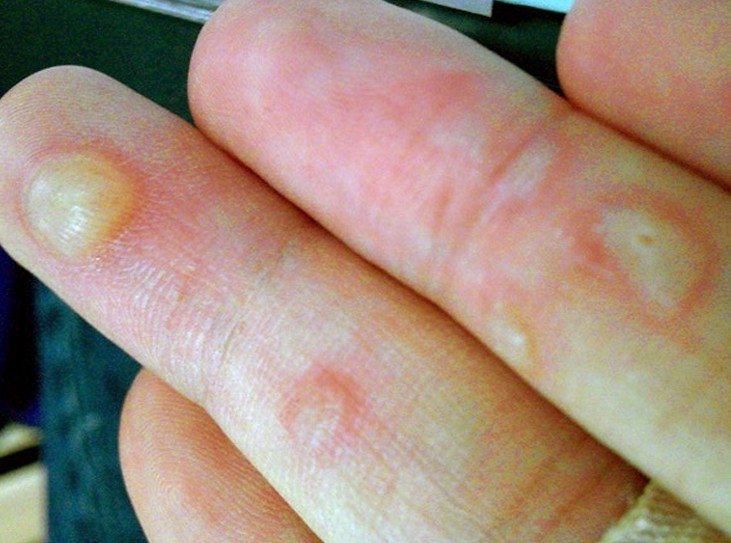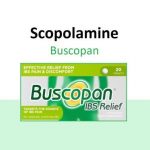
Contents
- 1 Causes of Blisters on the Hands
- 1.0.1 Signs and symptoms of hand blisters
- 1.0.2 Types of hand blisters
- 1.0.3 Causes of hand blisters
- 1.0.4 When to see a doctor for hand blisters
- 1.0.5 Diagnosis of hand blisters
- 1.0.6 Treatments for hand blisters
- 1.0.7 How to treat finger blisters
- 1.0.8 Caring for a finger blister
- 1.0.9 Prevention of finger blisters
- 1.0.10 Healing time for blisters
- 1.0.11 From
Causes of Blisters on the Hands
Blisters on the hands can be caused by eczema, friction injury, chemicals or allergens, medication reaction, infections, burns, or diabetes.
Blisters are fluid-filled bubbles that appear on the skin, containing blood, pus, or serum. It’s advised not to pop blisters to prevent infection.
Blisters on the hands can be painful and uncomfortable, caused by friction, irritation, infection, or underlying conditions.
Signs and symptoms of hand blisters
Hand blisters are easy to identify, appearing as small, medium-sized, or large pockets of fluid on the skin’s surface, usually on the palms or fingers.
These blisters can be painful, itchy, and scaly around the affected area.
Types of hand blisters
The main types of blisters are heat blisters, cold blisters (chilblains), and friction blisters. Other types are related to underlying health conditions.
Causes of hand blisters
Dyshidrotic eczema
Blisters on the hands can be caused by dyshidrosis or dyshidrotic eczema, appearing as small, itchy blisters on the palms, fingers, and soles of the feet. This condition is temporary and lasts for a few weeks.
Friction
Friction from objects can cause blisters, such as working with a rake without gloves.
Irritation
Chemicals or allergens can irritate the skin and cause blisters. Nickel-rich foods have been associated with hand blisters.
Medication
Some prescription drugs may cause blistering reactions. Consult with a doctor if you experience blistering after taking medication.
Infection
Blisters on the hands may indicate other conditions like chickenpox or impetigo. Consult a doctor for further evaluation.
Burns
Blisters can occur from severe sunburn, contact with hot surfaces, or exposure to flames.
Cold
Extreme cold can lead to chilblains on the fingers, causing itchy red swellings that may develop into blisters.
Diabetes
Severe diabetes can cause blistered hands or forearms, which usually heal on their own.
When to see a doctor for hand blisters
Consult a doctor if blisters persist and if you haven’t had a tetanus injection in over 10 years, experience swollen lymph nodes, increased swelling and pain, or signs of infection like pus, redness, or fever.
Diagnosis of hand blisters
The cause of hand blisters is usually apparent. However, a doctor may inquire about family and personal medical history, allergies, medications, chemicals, or allergen exposure. Patch tests or skin examination may be conducted in some cases.
Treatments for hand blisters
Treatment depends on the underlying condition. If the blister hasn’t popped, cover it loosely with a bandage. If it has, wash the area with clean, warm water and mild soap without removing the skin flap. Cover with a sterile bandage.
Treatments may include draining large blisters, antihistamines, anti-itch creams, or immune-suppressing ointments. It’s advisable to seek medical advice before attempting to drain blisters at home.
How to treat finger blisters
If a blister isn’t painful, leave it intact for protection. Cover it with an adhesive bandage or moleskin. If the blister is painful, follow specific steps to drain it without breaking the skin. Apply petroleum jelly or ointment, and monitor for infection.
Caring for a finger blister
Do not pop the blister if it’s not painful. Keep it clean, cover it with a bandage, and consult a healthcare professional if you have diabetes or symptoms of infection.
Prevention of finger blisters
Prevent friction blisters by wearing gloves for labor or well-fitting clothes. Avoid pinching your skin to prevent blood blisters. Prevent heat blisters by using sunscreen and taking precautions near hot surfaces. Consult a doctor for immediate attention if you have diabetes and notice blistering.
Healing time for blisters
Most blisters heal within a few days. Cover them with a bandage and consult a doctor if signs of infection occur. Seek immediate medical attention for severe pain, swelling, or redness.
From
Skin Problems and Treatments Resources
- Moisturizers for Psoriasis: What to Know
- What Is Chronic Idiopathic Urticaria?
- Navigating the Challenges of AD


